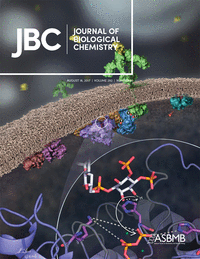 A biologist at the University of Basel is retracting two papers, citing data manipulation uncovered during an institutional investigation. That investigation has already led to the retraction of a paper in Science Translational Medicine by some of the same authors earlier this year.
A biologist at the University of Basel is retracting two papers, citing data manipulation uncovered during an institutional investigation. That investigation has already led to the retraction of a paper in Science Translational Medicine by some of the same authors earlier this year.
The two latest retractions, in the Journal of Biological Chemistry (JBC), share the same corresponding author — Michael Sinnreich, based at University of Basel — and first author, Bilal Azakir, who is now an assistant professor at Beirut Arab University. The retraction notices cite an investigation at the University of Basel.
Here’s the retraction notice for “Proteasomal inhibition restores biological function of mis-sense mutated dysferlin in patient-derived muscle cells:”
This article has been withdrawn by the authors. Following concerns raised about potential data manipulation, the University of Basel conducted an internal investigation. This evaluation established that data had been manipulated. Given that the integrity of the manuscript is compromised, the senior author has requested that the article be withdrawn. All authors agreed to the withdrawal. The Journal confirmed that data had been manipulated by determining that the same data had been used to represent different experimental conditions. Specifically, the tubulin immunoblot in Fig. 1C was reused in Fig. 5, B and K. In Fig. 2B, a portion of the tubulin and ubiquitin immunoblots from 134/04 myoblasts was reused for 180/06 myoblasts. In Fig. 2D, features in the ubiquitin immunoblot from 134/04 myoblasts were duplicated.
The paper has been cited 25 times, according to Clarivate Analytics’ Web of Science. The paper has been discussed on PubPeer.
Here’s the retraction notice for “Modular dispensability of dysferlin C2 domains reveals rational design for mini-dysferlin molecules:”
This article has been withdrawn by the authors. Following concerns raised about potential data manipulation, the University of Basel conducted an internal investigation. This evaluation established that data had been manipulated. Given that the integrity of the manuscript is compromised, the senior author has requested that the article be withdrawn. All authors agreed to the withdrawal. The Journal confirmed that data had been manipulated by determining that in Fig. 2C, features in the tubulin immunoblot were duplicated. Also in Fig. 2C, lanes 1 and 8 of the CHC immunoblot were duplicated.
The paper has been cited 13 times. Here is its PubPeer entry.
In our previous coverage about the retraction in Science Translational Medicine, the university’s vice president for research, Edwin Constable, told us that the lead scientist on the paper had alerted the University of Basel to possible issues with the paper. These concerns had originated from a 2014 discussion on PubPeer. In that thread, a commenter marked as “author”—who signed the note as Michael Sinnreich—uploaded an image of the figure in question, which led to further scrutiny.
We contacted Sinnreich and Constable to ask about the data manipulation and for a copy of the investigation report. A spokesperson for the university provided a response on their behalf (which is essentially identical to the response we received for the Science Translational Medicine retraction):
The University of Basel was alerted to a possible problem with these publications by the lead scientist. The initial alert stemmed from the discussion on PubPeer. The University of Basel implemented its established procedures for cases of potential scientific misconduct. As a result of these procedures, we recommended the retraction of these papers.
We cannot make statements regarding either the nature of and responsibility for potential misconduct or any additional retractions.”
We also reached out to Azakir about the investigation and the data manipulation, but received no response.
Like Retraction Watch? Consider making a tax-deductible contribution to support our growth. You can also follow us on Twitter, like us on Facebook, add us to your RSS reader, sign up on our homepage for an email every time there’s a new post, or subscribe to our daily digest. Click here to review our Comments Policy. For a sneak peek at what we’re working on, click here.